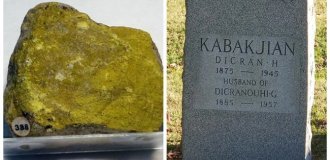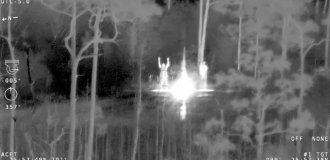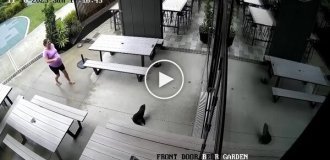The 1764 tornado in Woldegke, claiming the status of the strongest in history (5 photos)
On June 29, 1764, almost the entire population of the town of Woldegk was in church for a day of repentance and prayer. Also known as Buß- und Bettag, it is a public holiday celebrated in Saxony when people in Germany go to church to pray, repent of their sins, and reflect on their faith in God. 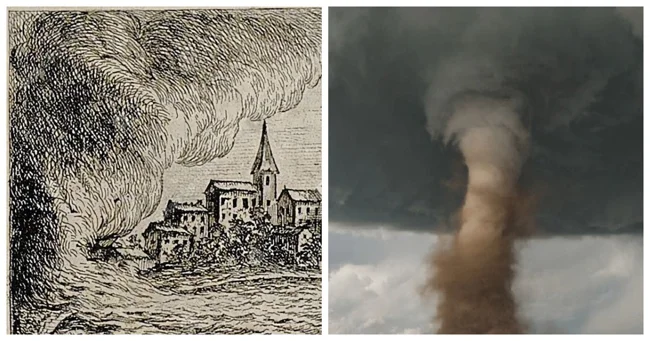
While people were still in church, an incredibly powerful tornado swept through Mecklenburg-Vorpommern, destroying houses and barns and uprooting trees. Despite the nature of the tornado, only one person died, the rest were saved by the solid stone walls of the church. It can be assumed that if the tornado had occurred on any other day, the death toll would certainly have been higher. 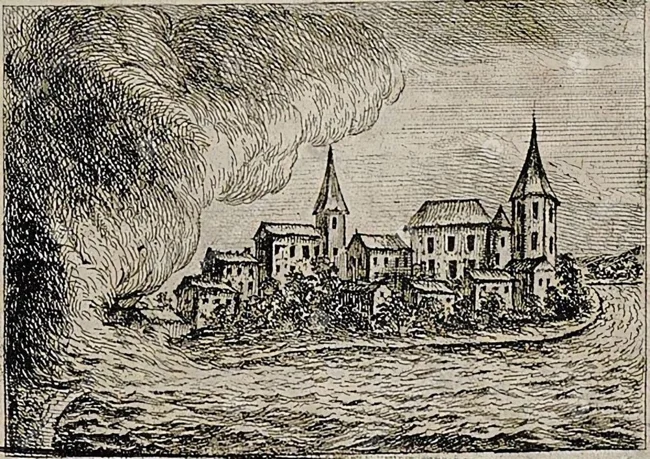
A copper engraving by Gottlob Burchard Genzmer depicting a tornado
At that time, science was still in its infancy, most people were illiterate, and such capricious weather phenomena as hurricanes and tornadoes occurred without warning. There were no instruments to measure the strength of these weather events, and only by piecing together information from eyewitness accounts and damage assessments could one hope to compile a somewhat credible account of such events.
German scientist Gottlob Burkhard Genzmer did a fantastic job of researching the storm that hit Woldegk, and six months later published a detailed account of the event. Thanks to his brilliant work, it became known that the Woldegk tornado was an F5 on the Fujita scale (or T11 on the TORRO scale), the highest ever assigned. This makes it one of the most powerful tornadoes ever documented in history. 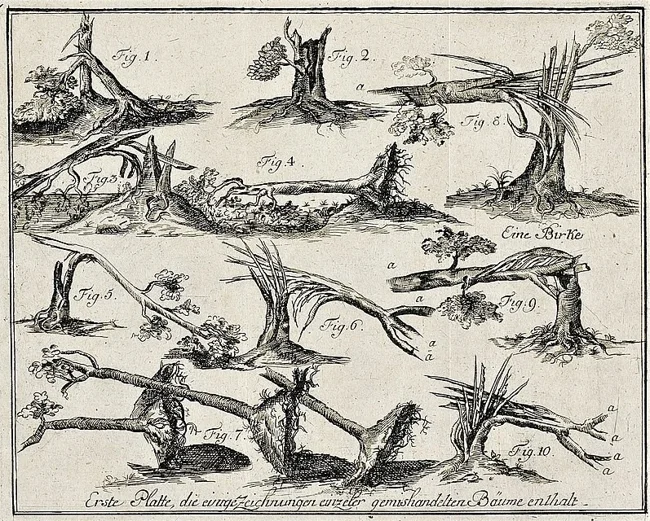
Gentzmer copper plate showing various types of forest damage caused by the tornado
The tornado passed about 1.5 km southwest of Feldberg just after midday. It uprooted several oak and beech trees, and as it moved northeast, it picked up two children and threw them into a lake. The tornado is believed to have been F2-F3 at the time. As the winds increased, fist-sized hail weighing up to half a kilogram began to fall from the sky. Several geese were killed by the hail.
The tornado was 100 meters wide and, crossing the lake, caused the water level to rise and then retreated. After crossing the lake, the tornado destroyed a house, ripping off the roof and blowing off the walls. This building was the only fatality.
The tornado then moved north and completely destroyed a beech forest. It was now 225 meters wide and only increasing in strength. It was probably now at the F3-F4 level. It uprooted several isolated oak trees and threw them 35 meters into the air. The tornado swept across the land, destroying crops, grass and topsoil. It then turned northeast, where it completely destroyed the Lichtenberg forest. 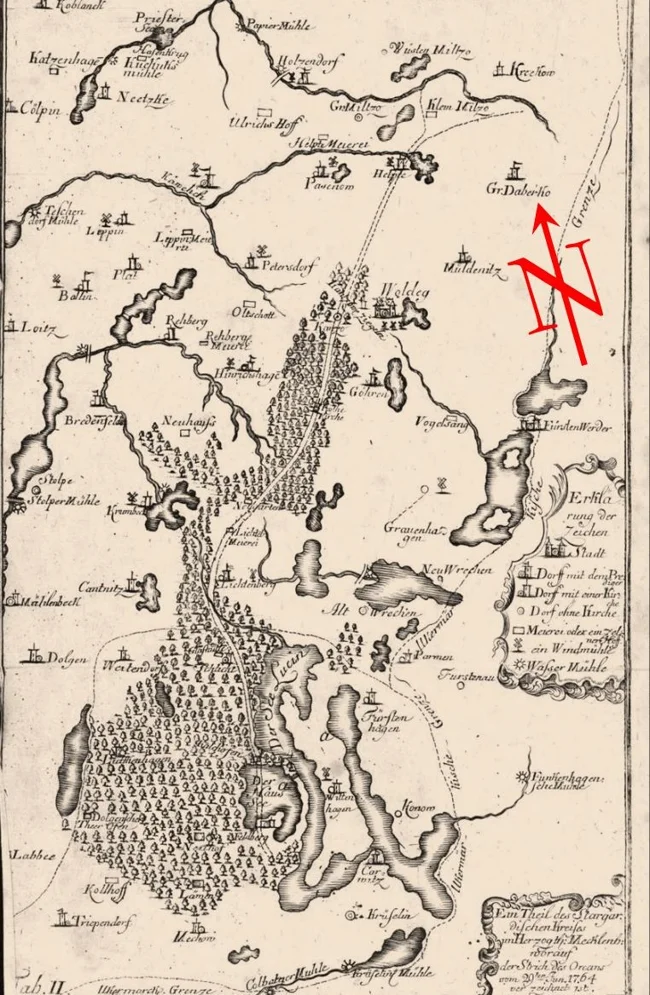
Genzmer map showing the tornado's path
Shortly after leaving the Lichtenberg forest, the tornado reached its peak strength. It completely destroyed a mansion with an adjoining farm. Oak tree stumps were torn out of the ground and boulders weighing 75 kilograms were scattered. The European Severe Storms Laboratory estimated the wind speed at around 480 km/h. An eyewitness saw several birds caught in the vortex and trapped.
At the ruins of the Rothe church, the tornado uprooted an old oak tree and raised a skeleton from its grave. The tornado reached a maximum width of 900 meters, causing severe damage to oak and beech forests, as well as a mansion and several barns. Further to the northeast, the tornado crashed into a flying flock of geese, killing several birds and injuring up to 100 people. The tornado finally dissipated in Helpt after an hour of movement, during which it left a trail of destruction 30 kilometers long.
Genzmer, a Lutheran theologian, teacher and naturalist, visited the disaster site about two months later. He meticulously recorded the destruction, measuring the circumference of the trunks of mighty oak trees uprooted along avenues and the thickness of the foundations on which houses once stood. He measured the distance between a barn and its blown-off roof. He made sketches of broken oak trunks and twisted branches. He found out the exact weather conditions on the day of the hurricane and interviewed people who saw the tornado, carefully checking the reliability of the testimony so as not to make a mistake. 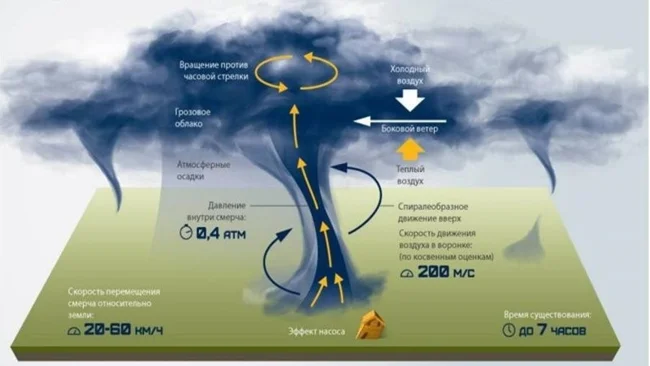
Diagram of tornado formation
The result of Genzmer's observations was a detailed report of 56 pages with 77 paragraphs, which he published in book form. It remains one of the most important pieces of evidence in the history of science of that period.
Genzmer's report, despite its rarity and uniqueness, was forgotten for almost 250 years until it was recovered from the archives of the Mecklenburg-Vorpommern State Library in Schwerin.
The report provides an excellent detailed description of the event, which meets modern standards. There is not a single reference to a supernatural event. Genzmer was acting empirically. It is about facts, about describing an event, not about trying to explain it.

